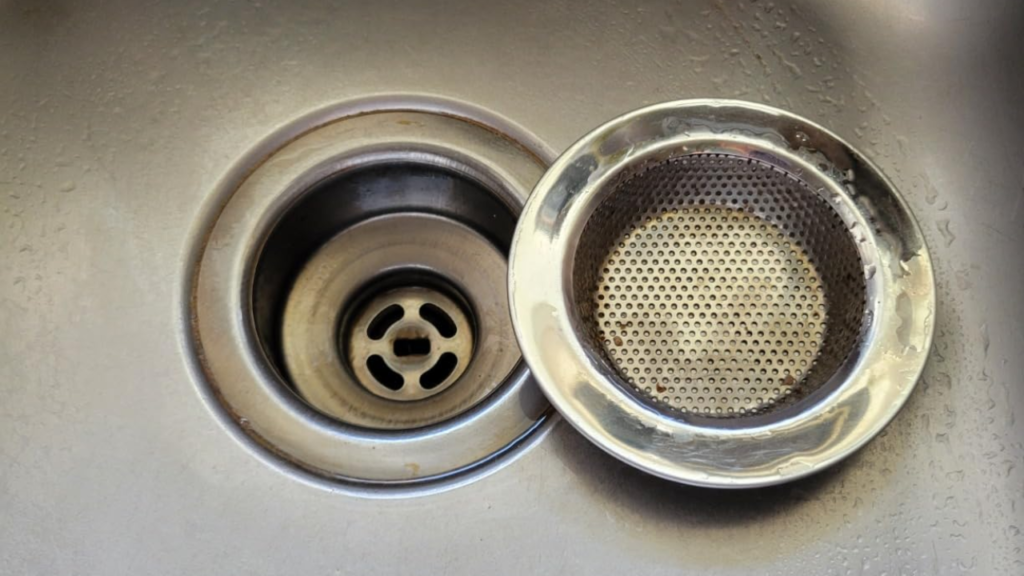Ever walked into your kitchen and caught a whiff of something unpleasant, only to realize it’s coming from the sink? I’ve been there. No matter how clean your kitchen looks, a smelly drain can ruin the whole vibe. Learning how to freshen a kitchen drain isn’t just about eliminating bad odors—it’s about keeping your space hygienic and functional. The good news? You don’t need harsh chemicals or expensive products. I’ll share some simple, effective ways to get your kitchen sink drain fresh and keep it that way. Let’s dive in!
Why Does Your Kitchen Drain Smell?
Have you ever walked into your kitchen and been hit with a weird, funky smell? It’s like something is rotting, but you just cleaned the place! The culprit? Your kitchen drain. Even though it’s out of sight, it can quickly become a breeding ground for odors. But why does this happen?
- Buildup of Food Particles, Grease, and Soap Scum
Over time, tiny bits of food, grease, and even soap can stick to the inside of your drain. When these start to break down, they release an awful smell—kind of like garbage that’s been sitting out too long. If left unchecked, this gunk can clog your pipes, making things even worse. - Bacterial Growth and Mold Formation
Your kitchen drain is warm and damp—a dream home for bacteria and mold. These microorganisms feed on the food debris and grease stuck in your drain, and as they multiply, they create that nasty, musty odor. Yuck! - Stagnant Water and Improper Drainage
If water isn’t draining properly, it can pool in certain spots, leading to standing water. Stagnant water smells bad, plain and simple. Plus, it provides the perfect environment for mold, mildew, and bacteria to thrive.
Quick and Easy Ways to Freshen Your Kitchen Drain
The good news? You don’t have to live with a stinky sink. Here are some easy, effective ways to freshen up your kitchen drain—using both natural and store-bought solutions.

A. Natural Cleaning Methods (Eco-Friendly Solutions)
1. Baking Soda and Vinegar Method
This classic combo works like magic to break down grime and neutralize odors. Here’s how to do it:
- Pour 1/2 cup of baking soda down the drain.
- Follow with 1 cup of white vinegar.
- Let it fizz for about 10-15 minutes (this reaction loosens up the gunk!).
- Flush with boiling water to wash everything away.
Why it works: The fizzing action helps break down stubborn residue, while vinegar’s acidity kills bacteria and removes odors.
2. Lemon and Salt Scrub
Lemons aren’t just great for lemonade—they’re also natural deodorizers!
- Cut a lemon in half and sprinkle coarse salt on the cut side.
- Scrub the inside of your sink and around the drain with the lemon.
- Rinse with warm water.
Why it works: Lemon’s natural acidity breaks down grease, while salt acts as a mild abrasive to scrub away buildup.
3. Boiling Water Flush
- Bring a pot of water to a rolling boil.
- Carefully pour it down the drain.
- Repeat once a week to prevent clogs and odors.
Why it works: Boiling water melts away grease and loosens debris stuck in the pipes.
4. Ice and Rock Salt Method
- Toss a handful of ice cubes and rock salt into the drain.
- Run the garbage disposal for 30 seconds.
- Rinse with cold water.
Why it works: The ice helps sharpen disposal blades, while salt scrubs away buildup and eliminates odors.
B. Store-Bought Solutions
1. Best Enzyme-Based Cleaners
Enzyme-based drain cleaners use natural bacteria to break down food waste and odors. Some top-rated options include Bio-Clean and Green Gobbler.
Pros: Safe for pipes, non-toxic, and eco-friendly.
Cons: Takes a bit longer to work than chemical drain cleaners.
2. Pros and Cons of Chemical Drain Fresheners
Chemical cleaners like Drano or Liquid-Plumr can dissolve clogs and freshen your drain instantly. However, they contain harsh chemicals that can damage pipes over time.
Best practice: Use sparingly and opt for gentler solutions when possible.
3. How Often to Use Commercial Drain Fresheners
If you prefer store-bought fresheners, use them once every two weeks to keep odors away without overloading your pipes with chemicals.
Preventive Measures to Keep Your Kitchen Drain Fresh
Want to stop odors before they start? Here are some easy habits to keep your drain smelling fresh:
- Regular Maintenance Routine – Clean your drain once a week with a natural method like baking soda and vinegar.
- Dispose of Food Waste Properly – Never pour grease, coffee grounds, or large food scraps down the drain.
- Use a Drain Strainer – This simple tool catches debris and prevents clogs.
- Follow a Weekly and Monthly Cleaning Schedule – A quick weekly rinse with boiling water and a monthly deep clean will keep odors at bay.
By following these steps, you can keep your kitchen drain fresh and functional—without any nasty surprises!
Common Mistakes to Avoid
Even with the best cleaning routine, a few common mistakes can undo all your efforts. Avoid these pitfalls to keep your kitchen drain fresh and functional.
Pouring Grease or Oil Down the Drain
It might seem harmless to rinse a greasy pan under hot water, but once that grease cools, it solidifies and sticks to the inside of your pipes. Over time, this buildup can cause blockages and nasty odors. Instead, pour used grease into a container, let it harden, and toss it in the trash.
Using Harsh Chemicals That Damage Pipes
Chemical drain cleaners promise quick fixes, but they often contain corrosive ingredients that can weaken your pipes over time. Instead of reaching for a harsh cleaner, opt for natural solutions like baking soda and vinegar, or enzyme-based drain cleaners that break down waste safely.
Ignoring Slow Drainage and Early Warning Signs
A slow-draining sink isn’t just annoying—it’s a red flag that buildup is forming inside your pipes. If you notice water taking longer to drain or a lingering odor, act fast. A simple flush with boiling water or a baking soda and vinegar treatment can help prevent bigger problems down the road.

FAQs
How often should I clean my kitchen drain?
For a fresh and odor-free sink, aim to clean your drain at least once a week using natural methods like boiling water or baking soda and vinegar. For deeper cleaning, a monthly scrub with lemon and salt works wonders.
What is the best homemade solution for freshening a kitchen sink drain?
A tried-and-true method is the baking soda and vinegar combination. Pour 1/2 cup of baking soda down the drain, followed by 1 cup of vinegar. Let it fizz for 10-15 minutes, then rinse with boiling water for a deep clean.
Can I use bleach to clean my kitchen drain?
While bleach can kill bacteria, it’s not the best choice for regular drain cleaning. It can react with other substances in your pipes and produce harmful fumes. Stick to gentler, natural cleaners for routine maintenance.
Why does my kitchen drain smell even after cleaning?
If your drain still smells bad after cleaning, the issue might be deeper down. Food buildup in the pipes, a dry P-trap, or even hidden mold could be the cause. Try flushing with boiling water, using an enzyme-based cleaner, or checking for drainage issues.
Are commercial drain cleaners safe for regular use?
Most commercial drain cleaners contain strong chemicals that can erode pipes over time. If you must use them, do so sparingly. For regular maintenance, stick to eco-friendly options like enzyme-based cleaners or natural DIY methods.
Conclusion
Keeping your kitchen drain fresh doesn’t have to be a chore. A little routine maintenance goes a long way in preventing odors and buildup. By using natural cleaning methods, avoiding common mistakes, and staying proactive with drain care, you can enjoy a fresh-smelling kitchen every day.
Now, it’s your turn! Have you tried any of these methods? Share your experiences and favorite drain-cleaning tips in the comments!

I’m a writer and culinary expert with over 10 years of experience in the kitchen. As a graduate of the Institute of Culinary Education and a passionate home chef, I created KitchenBreez.com to share my knowledge of kitchen techniques, cooking tips, and the best kitchen gadgets. Whether you’re a seasoned cook or just starting, my goal is to help you make your time in the kitchen more efficient and enjoyable.
